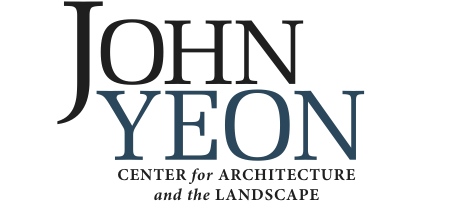Quest for Beauty: The Architecture, Landscapes, and Collections of John Yeon At the Portland Art Museum (2017)
May 13, 2017 – September 3, 2017
Few architects have influenced so many facets of a region as John Yeon (1910-94). For those acquainted with the name at all, he is most widely remembered as an architect, in particular for a series of houses—most prominently, the 1937 Aubrey Watzek House—that drew an international spotlight to what came to be known as the Northwest Regional style of modernism. His far-reaching innovations in construction and in what today is called sustainable design and his stylistic freedom from modernist dogma anticipated later movements ranging from the ecological modernism of Glenn Murcutt to the postmodern eclecticism of Robert Venturi and Charles Moore.
Yet as a planner, conservationist, art collector, historic preservationist, urban activist, and, perhaps most of all, connoisseur of elegance and craft, Yeon showed equal vision, whether crafting the gentle curves of a chandelier, shaping precedent-stretching gardens, choosing notable works of Asian and European decorative arts, or preserving what are now some of the Northwest’s most enjoyed vistas. Yeon wrote the first environmental impact statement for the Columbia Gorge, stopped roads and development that would have marred treasured scenic vistas at the Oregon Coast, played a pivotal role in the creation of Olympic National Park, and prevented the demolition of the Greek Revival First National Bank in Portland.
Yeon once compared his attitude toward architecture to that of a “landscape painter imagining what would look good in his landscape painting.” The primacy of the visual—the quest for beauty—applied to Yeon’s every pursuit.
Developed with the University of Oregon’s John Yeon Center for Architecture and the Landscape, Quest for Beauty’s architecture and landscape section surveys two dozen projects and buildings designed between 1927 and the mid-‘50s, among them a dynamic 1934 scheme for Timberline Lodge; Yeon’s 1937 masterpiece, the Aubrey Watzek House, first exhibited and published in MOMA’s 1939 tenth anniversary exhibit and book Art in our Time; his innovative plywood houses of the late ‘30s, built for as little as $3,280; and the 1950 Shaw House which elegantly anticipates the stylistic eclecticism of Postmodernism by more than two decades.
The exhibit features original models and drawings, along with photographs by a trio of the midcentury’s greatest architectural documentarians—Ezra Stoller, Maynard Parker, and Roger Sturtevant. Newly developed models and axonometric drawings will invite a greater understanding of Yeon’s careful siting of buildings and his cutting edge construction and sustainable design techniques. A high-definition time-lapse video records the changing seasons at the stunning 78-acre preserve in the Columbia Gorge, The Shire, that Yeon saved from development and, in the tradition of the English picturesque, designed with a series of vistas of Multnomah Falls. A collection of magazines and books and other ephemera featuring Yeon’s architecture and writings will also be displayed, among them, Architecture Forum, House Beautiful, and a series of Museum of Modern Art catalogs.
Visitors to Quest for Beauty will see that John Yeon was not only a significant architect, but also an important collector and generous benefactor. He had a keen sense of quality, an eye for detail, and a rare ability to combine materials from distant times and places, finding beauty in a mixture of Asian pottery, Italian furniture, Surrealist paintings. He also moved effortlessly across scale and scope, finding art equally in a small objects and vast landscapes.
